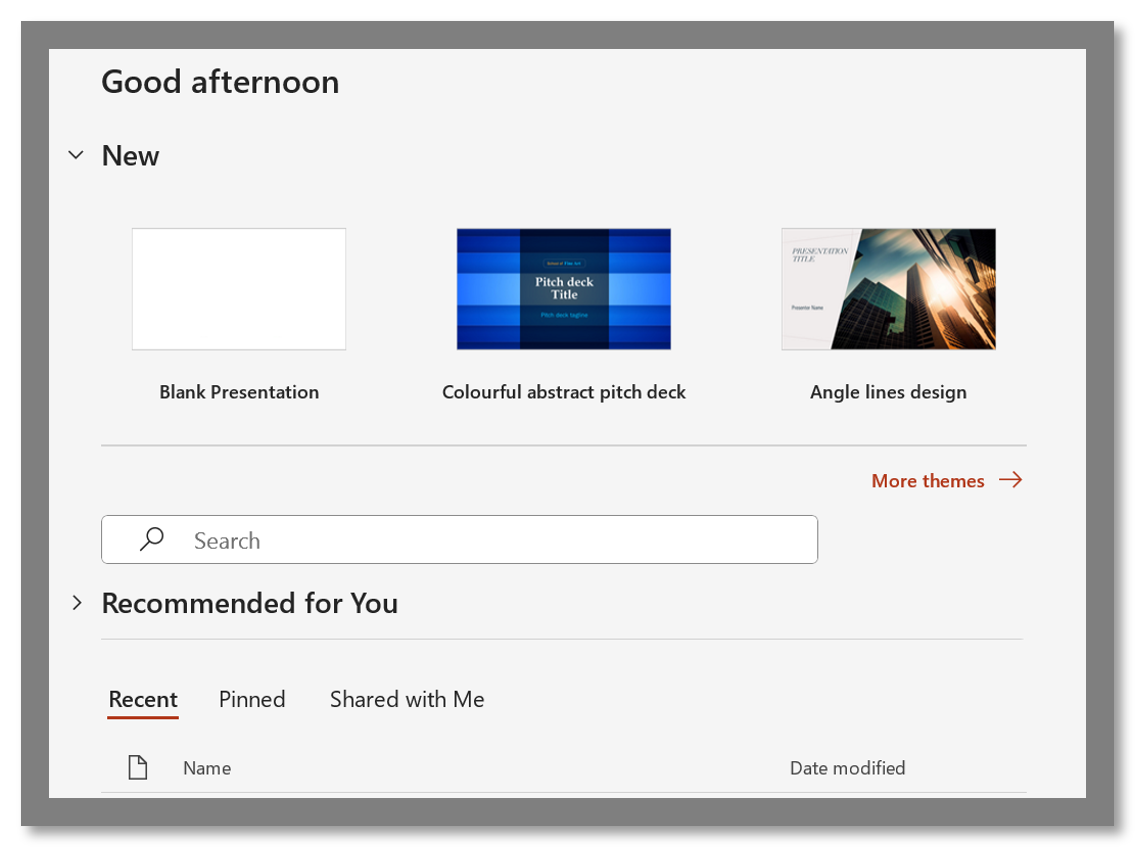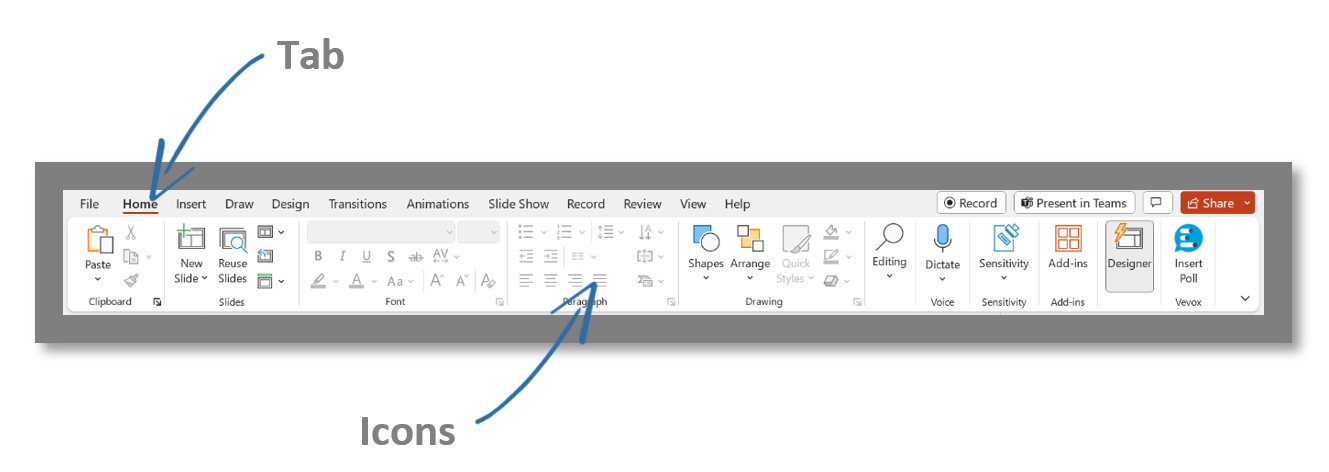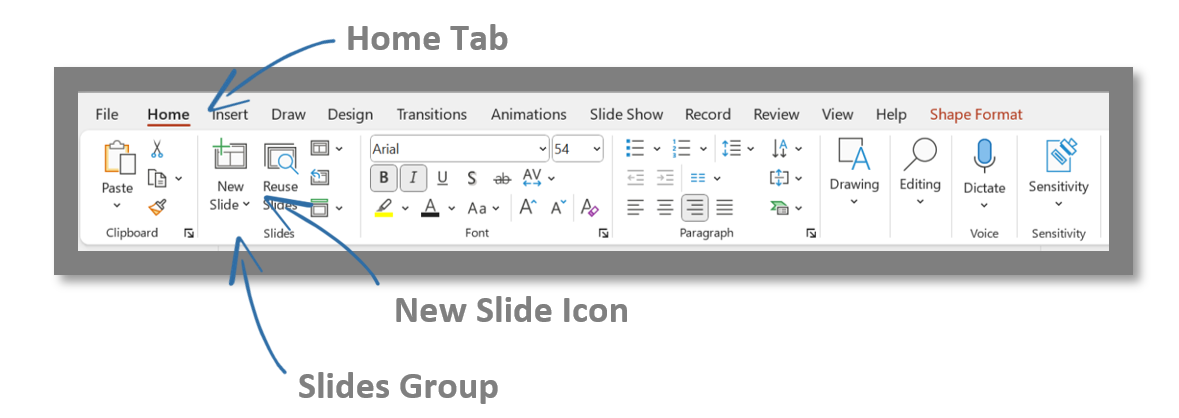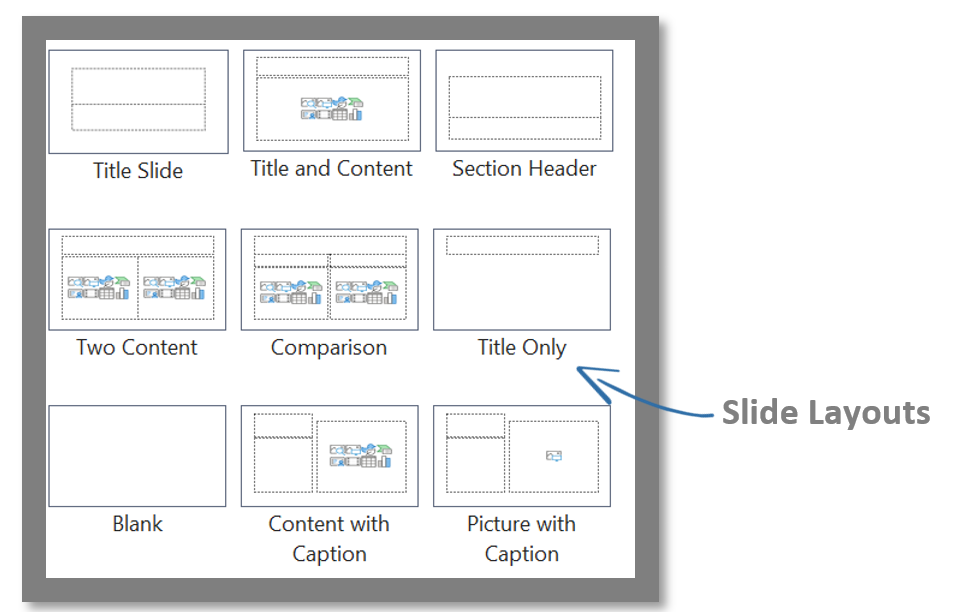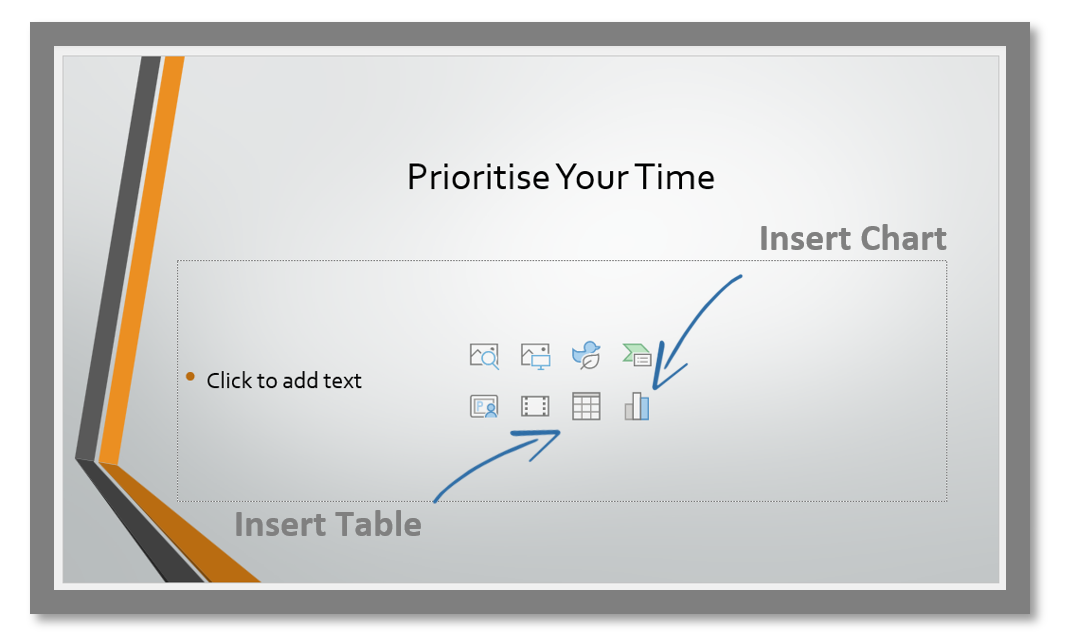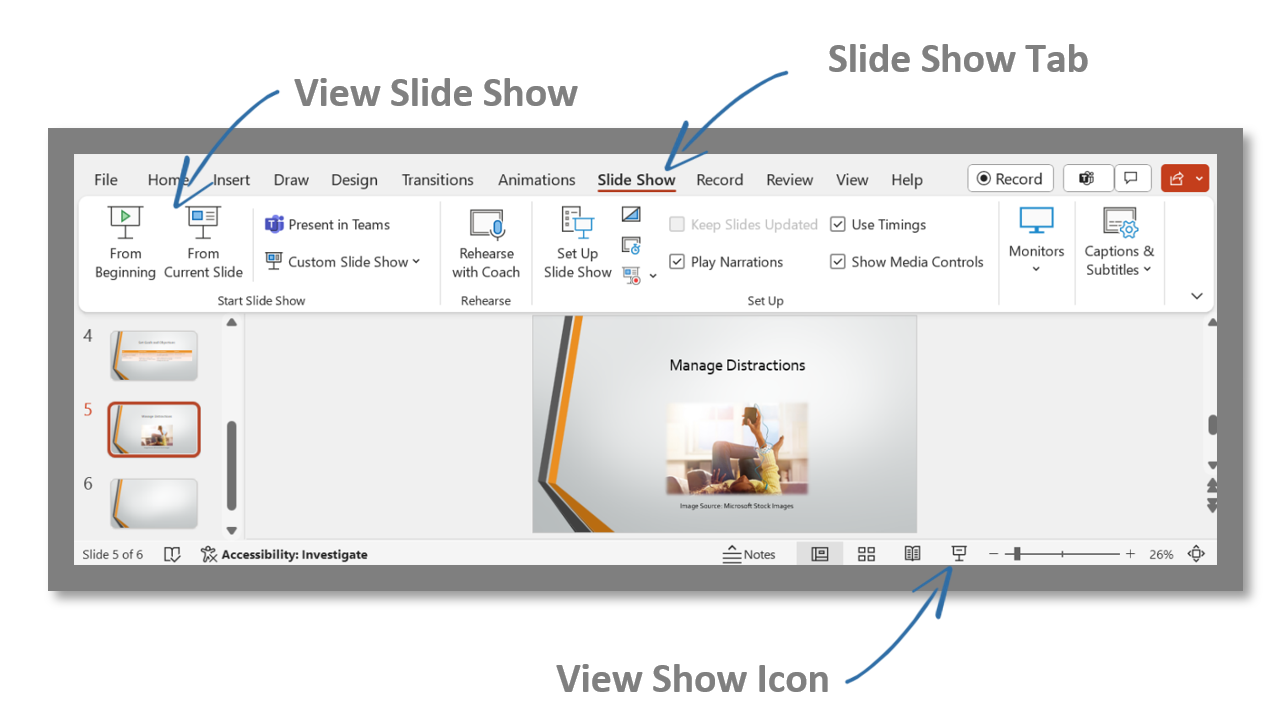It is easier than ever to find images for use in presentations. Most presenters have images saved on their computers or in the cloud, intending to include them in PowerPoint presentations.
Similarly, copyright legislation now allows for the use of any media content found online, provided it is sufficiently acknowledged, fair, non-commercial and used as illustration for instruction (see Section 32 of the Copyright and Rights in Performances Regulations, 2014).
Many people are also using AI tools to create custom images for their presentations. Additionally, Microsoft provides a bank of stock images that you can use in your presentations.
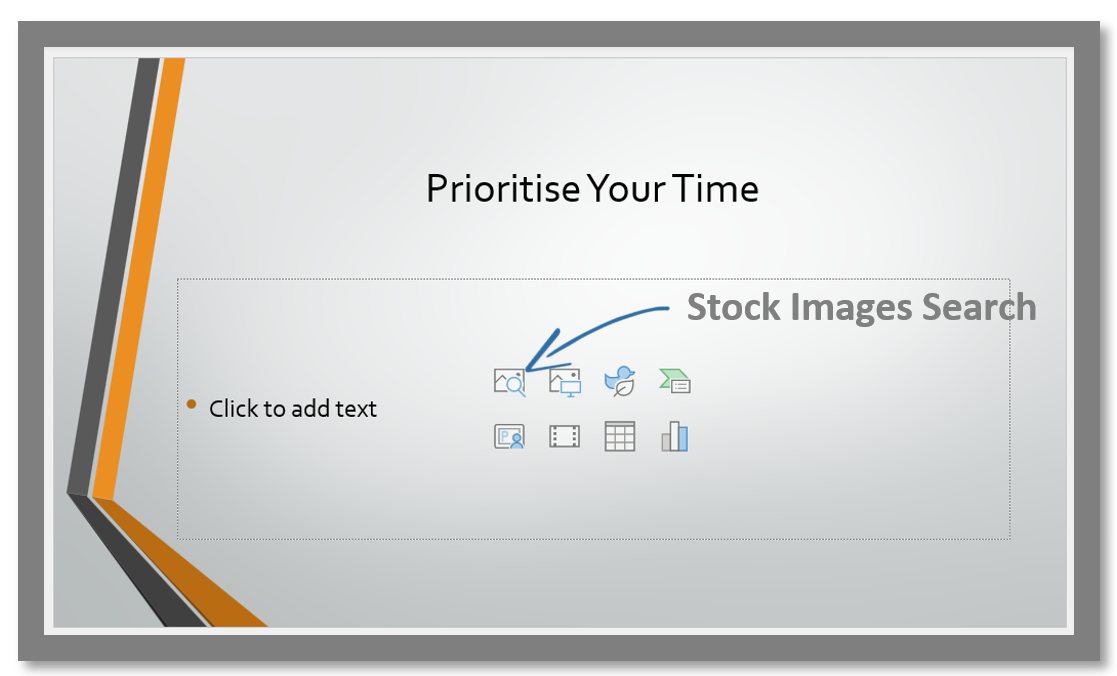
Formatting Images
Once an image has been inserted into a PowerPoint slide, it can be modified in various ways, including altering its size and position.
When an image is selected in PowerPoint, eight small dots called sizing handles will appear around it. Hovering the mouse over one of these handles changes the pointer to a white, double-headed arrow. By clicking and dragging the sizing handle, the size of the image can be adjusted.
Additionally, there is a circular arrow icon called the rotating handle, which allows the image to be rotated to any angle.








